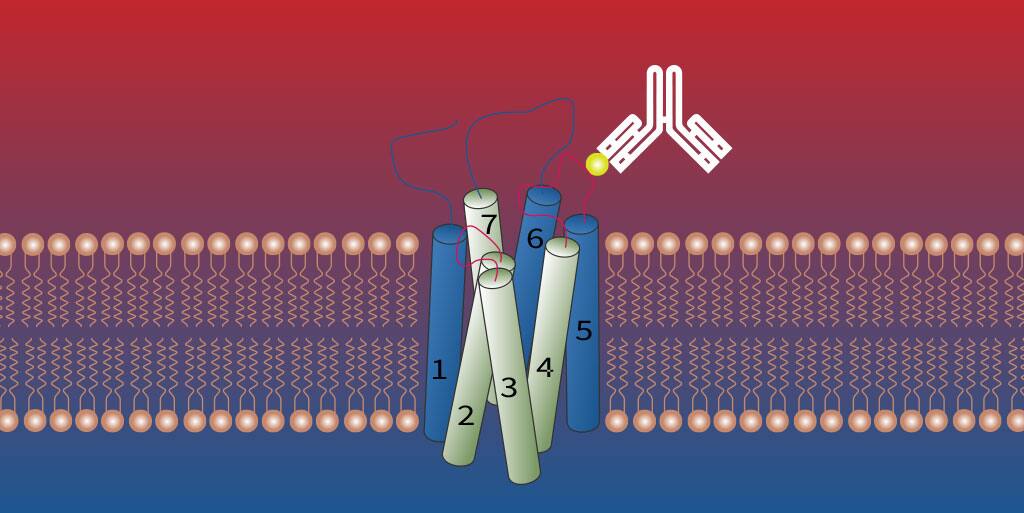The Heat Is On: Detecting Chemokine Receptors on Live Cells
Chemokine receptors and other multipass proteins require special consideration when staining live cells for flow cytometry analysis. These receptors have seven transmembrane domains, all of which are fluid and moving around in the cell membrane. As a result, the three extracellular loops, to which antibodies must bind, are also moving and this motion can change the orientation of antibody binding sites. While this domain flexibility is necessary for ligand binding to the receptor, it can create problems for flow cytometry staining of live cells. In addition to movement within the lipid membrane, chemokine receptors can undergo internalization and endocytic recycling, which can be induced by changes to the cellular environment during cell processing. All these factors can obscure the antibody binding epitope on the receptor and result in no staining.
Staining live cells at physiological temperature (37 °C) is one technique to avoid some of these potential pitfalls. This allows for chemokine receptors to remain fluid, increasing the likelihood that antibodies will detect the correct epitope conformations. It also allows internalized receptors to be recycled back up to the cell surface. Staining at 37 °C can improve the detection of many chemokine receptors by flow cytometry on live cells. We examined the effect of temperature on CCR7 staining using human peripheral blood cells, as shown below.

Detection of CCR7 on Human Peripheral Blood Cells. Human whole blood was stained with Mouse anti-Human CCR7 APC-conjugated Monoclonal Antibody (Catalog # FAB197A) and Mouse anti-Human CD4 PE-conjugated Monoclonal Antibody (Catalog # FAB3791P) at 4 °C, room temperature (RT), or 37 °C. Cells were washed and red blood cells were lysed with Flow Cytometry Human Lyse Buffer (10X) (Catalog # FC002) prior to final wash and flow analysis. All products listed are from R&D Systems.
Check out our interactive Chemokine Receptor-Ligand Pathway
Find more antibodies and more for flow cytometry
Watch the basics of flow cytometry webinar now
Learn advanced flow cytometry techniques in our second flow cytometry webinar
